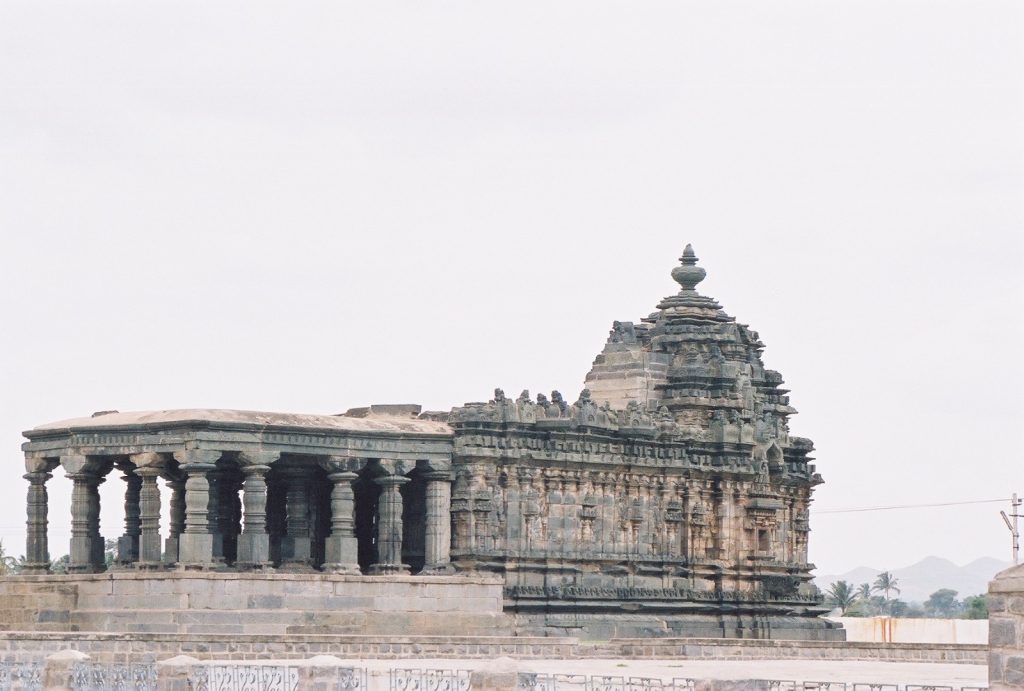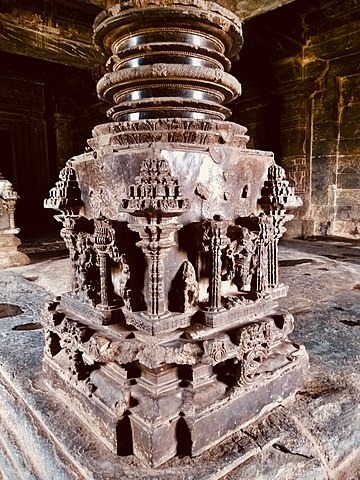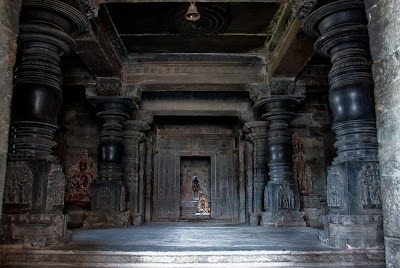A TESTAMENT OF KARNATAKA’S FINE ARCHITECTURE
Karnataka is a land of enchantment and wonder, where ancient traditions coexist in perfect harmony with modern advances. This beautiful state, nestled in the heart of South India, is known for its picturesque landscapes, rich cultural heritage, and diverse cuisine. It is a paradise for environment enthusiasts, with everything from the Western Ghats’ verdant woods to the Arabian Sea’s immaculate beaches. Majestic elephants, uncommon birds, and unusual plants are among the state’s divrse flora and fauna. Ancient temples, palaces, and ruins dot the landscape in Karnataka, a state that is likewise rich in history and mythology. A testimony to the state’s rich architectural heritage are the ruins of Hampi, which formerly served as the Vijayanagara Empire’s bustling capital.
The Chalukya dynasty ruled from the sixth to the twelfth centuries CE, and throughout that time, the Deccan region of southern India was dominated by the Chalukya architectural style. Its design is renowned for its rich, detailed decorative elements that were done with great accuracy and craftsmanship. The Nanneshwara Temple, located in Lakkundi, Karnataka, India, is a remarkable example of the Chalukya style of construction. The temple is renowned for its fine sculptures and carvings, particularly its towers. The 11th century marks the beginning of the Nanneshwara Temple’s long and illustrious history. The Chalukya dynasty was at its height of power during this time, and the area was a center of religious and cultural activities. The temple was constructed to serve as a place of prayer and to display the Chalukya dynasty’s aesthetic and architectural accomplishments.

There is a primary shrine for Lord Shiva in the temple complex, as well as smaller shrines for Ganapati, Parvati, and Vishnu. A Shiva Linga, thought to be a self-manifested lingam (svayambhu), is displayed in the main shrine and is regarded as being very lucky. The temple complex is encircled by a tall compound wall and is situated on a lofty platform. Its primary sanctuary, known as the Garbhagriha, is made up of a vestibule, known as the Antarala, and a mandapa, or pillared hall. The temple also features a sizable courtyard, or prakara, that is home to a number of additional minor shrines and buildings. The mandapa is a sizable, multi-pillared hall with finely detailed ceiling and pillar carvings. Other buildings on the prakara include a sizable tank called a kalyani, a kitchen called a bhojanashala, and a little museum.The architecture of the entire temple complex is symmetrical and geometric. The main entrance, the Garbhagriha, the mandapa, and the back of the complex, where the kalyani is located, make up the temple complex’s core axis. Each of the concentric rectangular enclosures that enclose the entire complex has its own entranceThe temple is renowned for its fine sculptures and carvings, particularly its pillars. Below is a thorough analysis of the Nanneshwara Temple’s pillars:

Material: The temple’s pillars are constructed of grey soapstone, a material that was frequently employed in Chalukya construction. Because soapstone is soft and simple to cut, artists were able to produce elaborate patterns and sculptures.
Pillars: The pillars at the Nanneshwara Temple are constructed in the lathe-turned manner, which was a typical element of Chalukya construction. The cylindrical pillars are decorated with exquisite carvings and patterns.There are sixteen pillars in the temple, which support the mandapa’s roof (pillared hall). The pillars are positioned in a rectangular arrangement and are uniformly spaced apart.
Base: The pillars’ bases are plain and unadorned, with the exception of a minimal ornamental band at the bottom. The unadorned base draws attention to the ornate carvings and decorations on the pillars’ shafts. The most decorative element of the building is the pillars’ shafts. Its surface is decorated in elaborate carvings and patterns that represent episodes from Hindu mythology, including the union of Shiva and Parvati, the battle of Kurukshetra, and the exploits of Lord Krishna. The sculptures are extremely intricate and exhibit remarkable skill and workmanship.
Capital: The pillars’ capitals are shaped like lotus flowers. In Hinduism, the lotus is a revered emblem that is frequently included into temple design. The beautifully carved lotus capital on the pillars of the Nanneshwara Temple has many layers of petals. The temple is also known or its intricate carvings and sculptures, especially its towers. Here is a detailed study of the towers of the Nanneshwara Temple:
Shikhara: A distinctive aspect of Chalukya architecture, the shikhara is the tower of the Nanneshwara Temple. The tallest component of the temple is the shikhara, which is situated above the shrine. The Nagara-style shikhara features a square base that evolves into an octagonal shape before reaching a dome-shaped top.
Base: The shikhara’s base is embellished with exquisite carvings and patterns that representepisodes from Hindu mythology.
Mastaka: The upper portion of the shikhara is known as the mastaka, and the lower portion is known as the kuta. The kuta is decorated with tiny towers known as urushringas.
Symbolism: The shikhara of the Nanneshwara Temple is highly symbolic and represents the abode of Lord Shiva. The shikhara is believed to be the dwelling place of the deity and is considered to be a sacred space. The shikhara also symbolizes the Chalukya dynasty’s power and authority.

The carvings in Nanneshwara Temple are evidence of South India’s rich culture, religion, and art. These elaborate carvings offer a priceless window into the values, customs, and technical prowess of the people who constructed the temple all those years ago. A trip to the Nanneshwara Temple is a must-do experience for everyone who enjoys history, art, or religion. The finest examples of South Indian heritage and workmanship can be found in this genuine cultural gem. Plan your trip to this historic temple today to experience the magic and majesty of its cultural treasures for yourself!
Glossary
Picturesque – visually attractive, especially in a quaint or charming way. Verdant – green with grass or other rich vegetation
Bustling – moving about in an energetic and busy manner
Kalyani – underground water buildings with stairs usually from three to nine stories Intricate – very complicated or detailed
